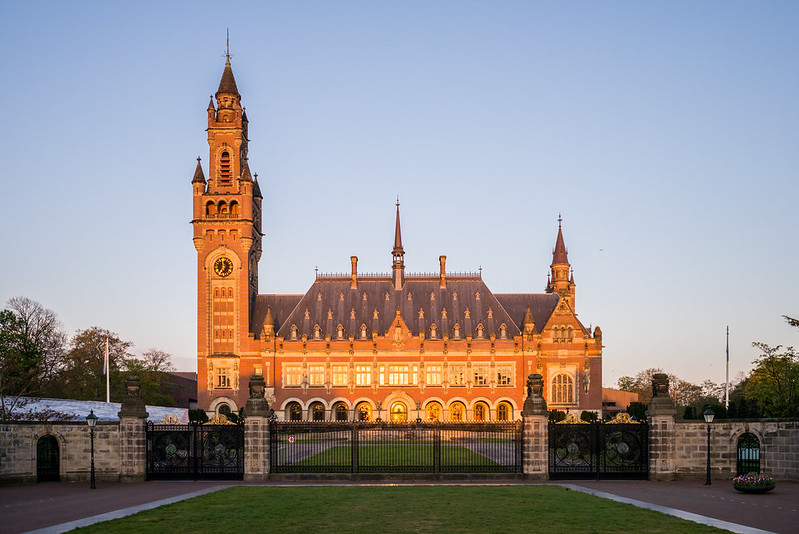Tom Goodfellow is a PhD candidate in LSE’s Department of International Development. His current research examines state effectiveness and the politics of urban development in East Africa. Here he points out that the way events have unfolded in Uganda over the past few months provides some answers as to why the upheavals in North Africa and the Middle East have not spread southwards.
Last week, traders in Uganda’s capital Kampala launched a two-day strike against rising commodity prices and increased competition from foreign businesses. The same day, minibus-taxi drivers announced a strike unless the government takes action to reduce the exorbitant fees charged to them by the powerful taxi owners’ association, which has a vice-like grip on the public transport sector.

These strikes are the latest in a series of events that peaked in April and May, when Uganda’s opposition leader Kizza Besigye led a string of ‘walk-to-work’ demonstrations in protest against rising food and fuel prices. The government responded with violence; over ten people were killed and hundreds arrested but Besigye was unrepentant in his commitment to the continued struggle. At the time, Uganda was one of many African states facing growing unrest – from Nigeria and Burkina Faso to Kenya and Djibouti – prompting speculation about the ‘Arab Spring’ making its way south.
Enhancing the comparison was the fact that Uganda’s President Museveni, like Egypt’s Mubarak before he was toppled, has clung to power since the 1980s through a series of flawed elections. Yet the ‘stay-at-home’ strikes taking place in Uganda over the past week in some ways bear more resemblance to recent events in London than Tahrir Square, let alone Libya. Where did the momentum that was building in those spring months go?
A closer look at the Ugandan case reveals how different the dynamics were to those in North Africa from the start. State repression there certainly was: during one protest Besigye had his arm broken and was bundled onto a van and forcibly restrained in front of television cameras; at a subsequent one, the police unleashed live bullets, injuring many and killing several. Yet Museveni always opted to employ the carrot alongside the stick, making public displays of opening new credit facilities for urban poor groups and pledging to address fuel prices even as his security forces opened fire elsewhere in the city.
Moreover, each time Besigye and other opposition leaders were arrested, they were released again almost immediately. While some observers at the time compared Museveni’s repression to that of his notorious predecessor Idi Amin, the latter would have simply ensured that his enemy ‘disappeared’ at night. Even Mubarak had his closest political competitor imprisoned for five years. Museveni instead allowed Besigye to repeatedly start protests, then lashed out in broad daylight and in front of press and television cameras while simultaneously making public concessions.
The point is that Museveni probably wanted people to see the repeated incidents of state-sanctioned violence, just as he wanted people to hear his public conciliations. The government and protesters were speaking to each other in a very different language from those north of the Sahara, continuing a sort of call-and-response exchange between rioting urbanites and the President that has been characteristic of Kampala for some years.
Waves of marketplace riots since 2007 have cemented public expectations that Museveni responds to marginalised urban-dwellers only when they riot, while the government has come to expect that minimal concessions alongside fire power will be sufficient to placate them. Limited rioting and limited response has thus become a form of political dialogue. For the protesters, if not for Besigye himself, the objective was never to unseat Museveni but to get his attention through the ‘politics of noise’ that has arguably become informally institutionalised in Uganda.
Revolution was therefore never on the cards. Once the ‘walk-to-work’ protests lost momentum in mid-May, Besigye began a ‘ride-drive-and-hoot’ campaign: residents of Kampala were encouraged to honk their car horns and blow on vuvuzelas continuously for up to twenty minutes every day. A clearer representation – parody, even – of Kampala’s ‘politics of noise’ can hardly be imagined. While extreme, the events of April and May were more like a caricature of normal politics in Kampala rather than the fundamental rupture seen in North Africa.
This, of course, is only Uganda. However, in none of the other African states experiencing unrest has the whiff of an ‘African spring’ translated into a summer of revolution or sustained uprising. The dynamics described above may well have played a role elsewhere in the region too. Like Uganda, many African regimes combine elements of democracy alongside authoritarianism, and many societies as yet lack the capacity in civil society to mobilise ‘noise’ into something more powerful and less easily bought off through politicians’ palliative gestures.
Despite all this, the kinds of strikes taking place in Uganda this week provide grounds for cautious optimism: they may be far from a ‘Jasmine revolution’ but they suggest that political mobilisation is crystallising into more institutionalised forms. As such they may be early steps in a much longer game that could bring positive change to governance through evolution rather than regime overthrow.






Interesting information. My question is why. Why are the masses not being inspired towards collective action, towards the mass uprisings that have been seen in so many other countries in the recent months? What is halting the mass movements, as the cause for grievance is obviously apparent for any regional watchers in many countries south of the Sahara, with the obvious example being Zimbabwe. Is this cultural, technological, economic, or is the simple, age-old menace of violence creating still-born revolutions?